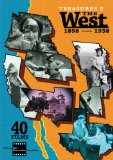| Reviews & Columns |
|
Reviews DVD TV on DVD Blu-ray 4K UHD International DVDs In Theaters Reviews by Studio Video Games Features Collector Series DVDs Easter Egg Database Interviews DVD Talk Radio Feature Articles Columns Anime Talk DVD Savant Horror DVDs The M.O.D. Squad Art House HD Talk Silent DVD
|
DVD Talk Forum |
|
|
| Resources |
|
DVD Price Search Customer Service #'s RCE Info Links |
|
Columns
|
|
|
Treasures 5: The West, 1898-1938
Image // Unrated // September 27, 2011
List Price: $59.98 [Buy now and save at Amazon]
The Collection:
The National Film Preservation Foundation has put together another excellent set of movies from American film archives. This fifth collection, Treasures 5: The West 1898-1938, features 40 films that run a total of over 10 hours spread across three discs. Like its predecessors, this set is filled with rare and largely unseen movies and this time the focus is on the American West, both Western genre movies and vintage films portraying what life was like in the western states. It's an excellent collection that is both educational and entertaining.
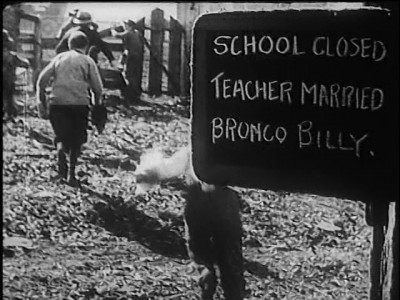
Western films have been popular since the beginning of film, both with moviegoers who enjoyed the action and romance of the old west, and with producers who were happy to cut costs by using any nearby undeveloped land in place of
While most of the films in this set are shorts, there are some features including The Lady of the Dugout (1918) that boasts a real life outlaw: Al Jennings.
One of my favorite features in this collection has to be the Clara Bow film Mantrap (1926). Made a year before she's achieve superstardom with he most well known film, The 'It' Girl, this movie shows Clara full of pep and energy. She plays a city girl who marries a Canadian and moves with him back to the small town of
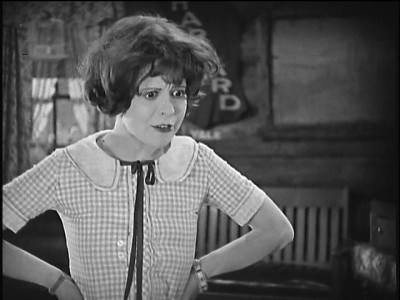
There are several interesting short subjects that pretend to look at what life was like in the old west. One of these curiosities is Life on the Circle Ranch in California (1912) that purports to show what cowboys do and how they spend their day. It looked authentic to me until I played it with the commentary track by Donald Reeves who points out the myriad mistakes and errors that are made.
Another fun short is the early Sennett comedy The Tourists (1912). This features a very young Mabel Normand as part of a couple taking a vacation. When their train stops in
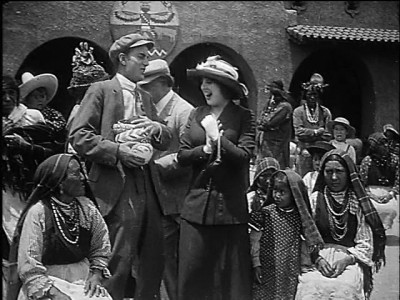
Speaking of tourists, there's an interesting travelogue that was produced by the Harvey Corporation and the Santa Fe Railroad Company, The Indian-detour (1926).
There are also some great documentaries in this set as well, including my favorite film in this collection, We Can Take It (1935). This film, made by the Dept. of Agriculture, was made to show what life was like in the Civilian Conservation Corps, one of FDR's programs to fight unemployment during the depression. Men aged 18 to 25 could join. They were given free lodging and three square meals a day as well as $30/month, of which $25 was automatically sent home to the man's family. These youths went through a physical (where nearly 75% of them were discovered to be malnourished) and sent to work camps all across
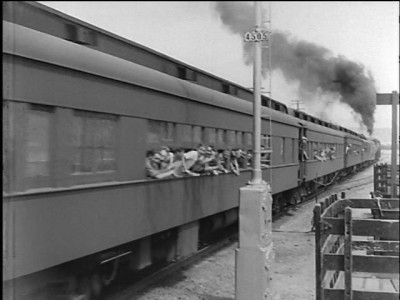
In addition to all of that, the set has a rare early color film, a Gilbert M. Anderson Bronco Billy flick, newsreels of Indians arriving in
The DVDs:
This collection of films arrives on three DVDs, each with its own slimcase. The three cases and a supplementary 110 page book are housed in a colorful thick-board slipcase.
Audio:
All of the selections were accompanied by music composed and performed by a wide variety of musicians, and they all fit the pieces well. There were no audio defects and the discs sounded fine.
Video:
These films were all restored by the various archives that contributed to this set, and they look wonderful. There is some variation to the quality of the image, and a few films show signs of decomposition, but they generally have excellent contrast, a good amount of detail, and a wide range of grey hues. Like the previous sets, these films look magnificent.
Extras:
These films all come with commentary tracks from a wide range of film scholars and historians who offer some very interesting insights. While a couple of commentators merely state the action that's happening on the screen, the majority talk about the background of the film, the actors and people behind the camera, and impact it had when released.
I really appreciated the commentary tracks, especially the ones that discussed the social backgrounds to the films, such as Deschutes Driftwood and The Promised Land Barred to Hobos. In both these commentaries the plight of homeless men looking for work are discussed and how they were treated. There were a couple of commentaries that were a bit too analytical and took things a bit too far. The track to Salomy Jane comes to mind. While the commentator, Gary Scharnhorst, is obviously an expert on the works of Bret Harte (the author who wrote the book the movie was loosely based on) he goes into too much detail analyzing the Freudian symbolizism in the images of the movies. A girl riding a horse through a stream isn't an establishing shot; it's a method of imbuing her with sexuality since a horse is a symbol of virility. The same doesn't apply to a man riding through town apparently. Since the movie was made in 1914, it's rather doubtful that the director was aware of Freud or his theories on sexuality.
Final Thoughts:
Treasures 5: The West 1898-1938 us a great set filled with many rarities and little seen films. There are newsreels, travelogues, features, and shorts, all of which deal in some way with some of the American West. With films made by Mack Sennett and D.W. Griffith and stars such as Mabel Normand and Clara Bow, there's a lot of solid entertainment here in addition to the historical and educational value of these films. The National Film Preservation Foundation has created another must-buy collection that easily earns DVDTalk's highest recommendation. DVDTalk Collector Series.
|
| Popular Reviews |
| Sponsored Links |
|
|
| Sponsored Links |
|
|
| Release List | Reviews | Shop | Newsletter | Forum | DVD Giveaways | Blu-Ray | Advertise |
|
Copyright 2024 DVDTalk.com All Rights Reserved. Legal Info, Privacy Policy, Terms of Use,
Manage Preferences,
Your Privacy Choices | |||||||









